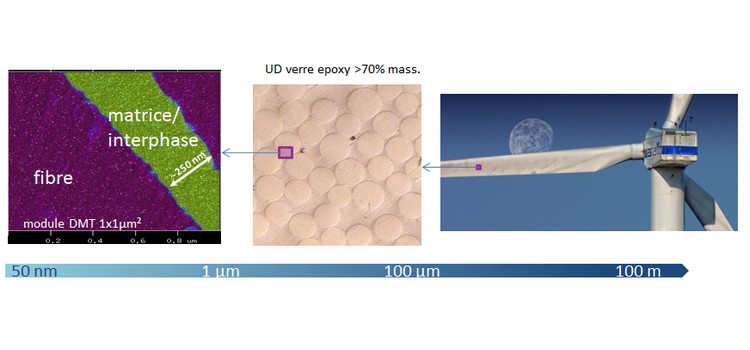Interphases in model epoxy/glass fibre composites: correlation between macro/nano properties and wet aging
Supervisor: CHAILAN Jean-François
Co-supervisor: FAHS Armand, BELEC Lenaïk
Abstract
This thesis work focuses on understanding the influence of sizing chemistry on the interfacial properties of composites in the initial state and on their durability in hydrothermal environments. In this study, model interphases between E-glass fibres and an epoxy matrix have been designed and studied in terms of adhesion and mechanical strength from the nano to the macroscale. Two interphases were consisted of a reactive sizing comprising either an APTMS silane coupling agent alone or a DGEBA pre-polymer film former with the APTMS agent. A third interphase is formed of a non-reactive sizing containing a MTES silane combined with a BGEA film former (neutralized DGEBA). The sizings of fibres were evidenced by SEM/AFM observations and XPS spectroscopy. The characterization of the model composites by AFM in nanomechanical mode, micromechanical and thermomechanical tests revealed the effect of the sizing chemistry on the fibre/matrix interfacial properties. The interfacial strength is higher for composites reinforced with APTMS and APTMS-DGEBA sizing fibres than those prepared with MTES-BGEA sizing fibres. The hydrothermal ageing study of the different systems showed that the reactive sizing seems to better protect the fibre/matrix interface in the presence of water. The non-reactive sizing weakens the interfacial resistance, but it would delay the hydrolysis of the epoxy matrix by a “buffer” effect.
Keywords
Sizing chemistry; interface/interphase; epoxy composites; glass fibres; nano and micro-mechanics; hydrothermal ageing.



